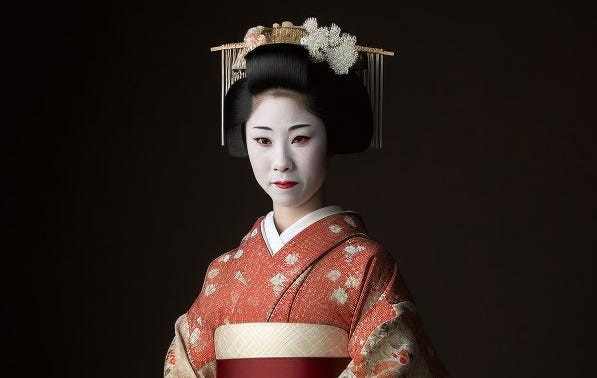Under the AI Kimono
I asked an AI to write a digest of this article: "Japan has always blurred the lines between what is real and reproduction, making it an interesting place to observe the impact of generative AI.”
Something interesting happened last week — my wife and collaborator on many projects and books, Hiroko, tweeted a critique of an illustration of a woman in a kimono, and it went viral. (The person she’s quote-tweeting deleted their post amid the deluge of attention, but you can see all of the imagery in Hiroko’s thread.)




